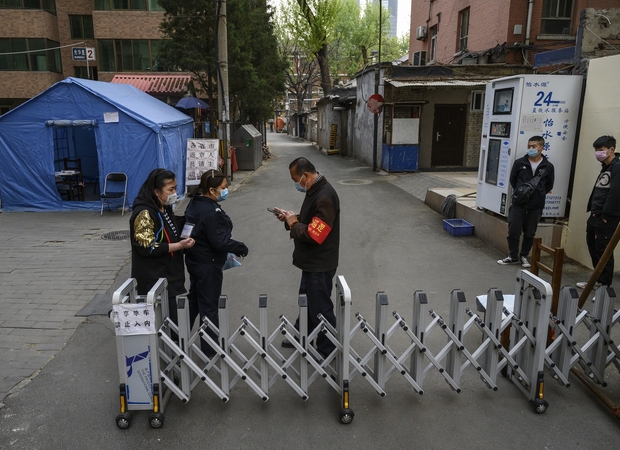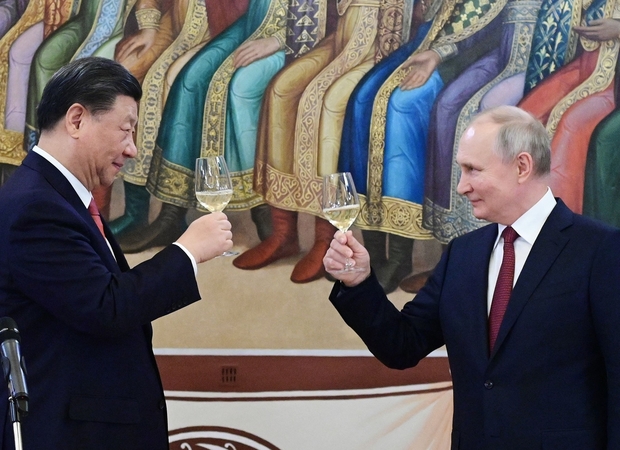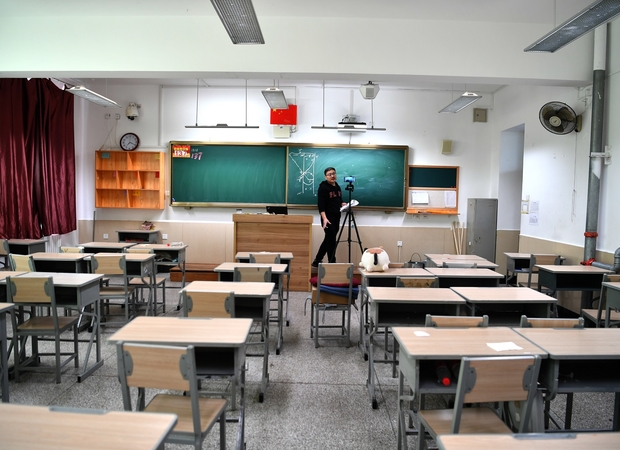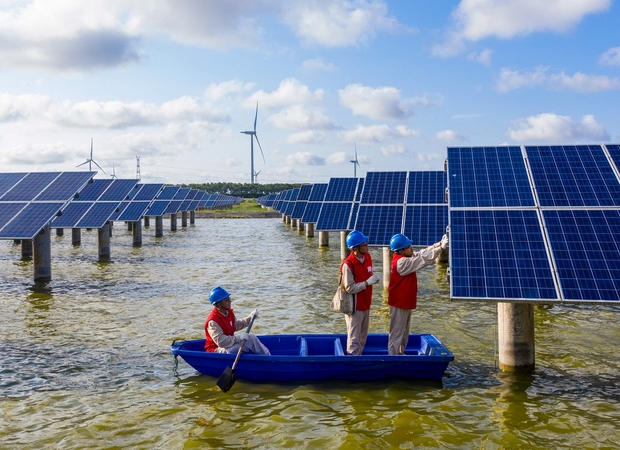With China accounting for more than a quarter of annual global greenhouse gas emissions, the future pathway of China’s emissions will play a central role in determining the extent to which the world can meet the Paris Agreement’s climate change targets. China has taken several ambitious steps in recent years to control and reduce its impact, headlined by Xi Jinping’s personal announcement in September 2020 that China would peak its carbon emissions before 2030 and achieve carbon neutrality before 2060, referred to as the “dual carbon” (shuangtan, 双碳) targets. However, the lifting of the zero-COVID policy and ongoing concerns about energy security, among other factors, have exacerbated uncertainties about how, exactly, China intends to meet its targets.
With this year’s Two Sessions meetings set to unveil institutional reforms and a significant reshuffling of personnel, Asia Society Policy Institute’s Associate Director of Climate Kate Logan spoke with Li Shuo, Senior Global Policy Advisor at Greenpeace and one of the world’s leading experts on China’s multilateral climate and environmental governance, to discuss the potential implications for China’s climate and environmental governance. The following conversation was recorded a few days ahead of when the Two Sessions meetings commenced on Saturday, March 4. It has been edited for clarity and length.
Kate Logan: Hi, Li Shuo. It’s great to see you again. You’re actually in New York right now for the negotiations on the United Nations Convention on the Law of the Sea (UNCLOS) and marine biodiversity zones on the high seas. It’s good to welcome you back into the international fold after a few years. I hope everything’s been going smoothly over at UN headquarters this week.
Li Shuo: Thanks for having me, Kate. Very happy to discuss climate and China after two weeks of oceans negotiations at the UN. It’s a good change for me.
What we want to talk about today are expectations around China’s climate and environmental policy with regard to the upcoming Two Sessions meetings this year. They will be part of the five-year cycle of institutional reform—so a pretty major set of meetings. Maybe we could start by going back five years ago to 2018, when we saw climate policy governance shift from the National Development and Reform Commission (NDRC), the development ministry, to the newly renamed Ministry of Ecology and Environment (MEE) as part of the last set of reforms.
What has been the impact since those reforms in 2018 on the Chinese central government’s approach to climate change? And how might this set the backdrop for what we could expect to see this year?
I think the short answer is that we’re not in Kansas anymore. Certainly a lot of things have changed. That’s actually a useful way to unpack the progress—or lack of it—of China’s climate action, if we go back to 2018 or so. I think it’s important to recall that those were the Trump years, but also the post-Paris Agreement years. Around 2018, what we observed was that despite the changing geopolitical situation—in particular, the withdrawal of the U.S. from the international climate scene—China was still interested in advancing not only its own climate agenda, but also the global climate agenda. So, in that sense, we preserved the valuable momentum that was generated in 2015 as a result of the Paris Agreement.
It was also notable, as you mentioned, that we had a bureaucratic reshuffle in that year, where the climate agenda was moved from the NDRC to the MEE. What happened after that? I think another subsequent major milestone, of course, was the somewhat surprising 2020 announcement, the dual carbon announcement made by President Xi Jinping—and in particular, the carbon neutrality [before 2060] pledge, which generated quite a bit of momentum. In China’s domestic climate discourse, immediately after that announcement we saw a big round of bureaucratic mobilization, trying to find ways to fulfill that vision in particular, on two fronts. One was that provinces found the urgency to actually act on climate change. So the issue was no longer just a Beijing agenda. And second, the key emitting sectors—steel, power, cement, transportation—were also asked to deliver more ambition. So that momentum really helped us all the way into 2021.
Around the middle of that year, there was also a lot of reflection from a governance and bureaucratic point of view on whether the environment ministry was best positioned to help deliver such a grand vision. For carbon neutrality, you really need to adjust not just the environmental aspects—the end-of-pipe emissions—but you need a reshape of your whole economic system. So around late 2020 and early 2021, there was also a lot of discussion in Beijing on the NDRC versus MEE labor division for the climate topic. I would say momentum in general started to decline as we entered further into 2021: The Chinese economy suffered difficulties, and some parts of the country experienced power shortages. Of course, as we entered into 2022, the zero-COVID situation really distracted us from the climate agenda. So as we move into 2023, the top priority for the country is to revive the economy. It is indeed a very important question, to what extent climate considerations will be featured in our economic recovery.
Let’s go to October 2022 and the 20th Party Congress. President Xi Jinping further enshrined the dual carbon targets during that meeting, but also elevated this concept of xianli houpo (先立后破), “building the new before breaking the old.” So we saw this emphasis on both clean coal and fossil fuels on one hand, and on the other hand the continued acceleration of new and clean energy development.
A lot has happened between that meeting in October and now, especially with regard to the economy and the lifting of the dynamic zero-COVID policy. We’ve seen the figures for China’s projected economic growth in 2023 massively readjusted. And as you just alluded, at this year’s Two Sessions, we’ll see a new economic master plan coming out. What does that mean in the context of xianli houpo?
I think we should see all of this in the context of the dual carbon commitment. As I mentioned, this announcement really set a high note for China’s climate momentum. But since then, the climate agenda has suffered quite a bit from our economic situation, the zero-COVID situation, and of course, the perceived energy security challenges. And I think we should see this concept of xianli houpo—meaning to ensure enough supply of energy before phasing out some of the higher-carbon sources of energy—we should see this concept in that context. I think there is still a strong desire within the Chinese system to maintain the role of coal in our overall energy mix. And that is indeed a big concern from the environmental point of view.
As I mentioned, starting this year, China will prioritize economic recovery. At the same time, we have already observed a record speed of coal power plant approval across the country. So I think the key question for us to watch is whether this growing momentum on coal will be there, and will it become even stronger. And I think the concern is the need to drive up GDP growth; the need to ensure energy security. Even if it is somewhat of a misleading way of understanding energy security. I think those things are going to be important to watch. And also whether we will see further bureaucratic adjustments out of the Two Sessions. I think that’s also something to pay attention to. I think what has already become clear is that there will be some personnel changes within the Chinese bureaucratic system—from the tactical level, at the environmental ministry, for example, to higher levels, the ministerial level. And of course, as you mentioned, the top leadership, the premier and the vice premier. So it is also going to be a very important season for us to observe. What will be the policy preferences of those new leaders? How do they balance the economic growth agenda and the climate action agenda?
Let’s dive into that personnel question a little bit deeper. Who should we have our eyes on with regard to climate and environment at the central level? For instance, former Vice Premier Han Zheng, who has been chair of the leaders’ group on carbon peaking and carbon neutrality, is no longer part of the Politburo Standing Committee. And [Special Climate Envoy] Xie Zhenhua was already brought out of retirement. What should we be watching in terms of any shuffling, especially at the highest levels?
I would continue to pay attention to the political rhetoric from the very top level—Xi Jinping—again, bearing in mind that the dual carbon commitments were announced by him. Since then, as you mentioned, there have been adjustments to the rhetoric—xianli houpo, for example. So I think what message the top leadership both send out of the Liang Hui (Two Sessions) will be something quite important to watch. And of course, this political intention will need to be implemented by China’s bureaucratic system. So I assume the vice premier will still play quite an important role in delivering that agenda. And then it goes all the way down to the NDRC and the environmental ministry. We still have some pending questions on the labor division between these two ministries. Can we expect that now there will be new leaders, potentially in both ministries, but also above them? Will that help streamline the labor division, or not? And if so, how much time will it take to streamline the labor division? I think those issues are the ones that we need to watch. And if all these issues are settled, at some point in the future, the outcome of that will tell us a lot about the direction of China’s climate momentum.
Do you think that governance for climate policy may increasingly shift back toward the development ministry, or will it stay with the environment ministry? And how much do these sorts of governance questions actually matter, versus how much is the potential for progress really down to personnel and coordination?
Well, I think it is both the bureaucratic structure, but also, of course, key individuals, their preferences, and their leadership. What I would say in general is it is increasingly clear that the climate agenda is the economic agenda, and the economic agenda will also have huge implications for the climate agenda. And this is not limited to China. Right? If you look at the U.S. climate deal, in many ways, you could argue it is an economic deal. So it is very much intertwined. And I think it is a good thing, right? It means, in a way, that the climate agenda has been mainstreamed in the bureaucratic systems of different countries. So I think in the long term, it is inevitable for China, but also for all the other countries, to integrate climate considerations in their economic policy setting. And I think everybody can have their own judgment or assessment as to which ministry might be the best positioned to achieve that objective.
Yeah, that’s a good point. For instance, in the U.S., the Environmental Protection Agency (EPA) is responsible for emissions monitoring, which is a comparable role to the Chinese environment ministry’s responsibility to track and control pollution. And that comparative strength [in monitoring] was perhaps part of the reason why climate governance was transferred [to MEE], especially as the carbon-trading market was being rolled out and the accounting of greenhouse gas emissions became more and more important—lending that comparative strength to climate emissions governance. But, as you pointed out, countries approach climate most effectively when they incorporate it across different government agencies to leverage their different strengths and treat climate as an economic development issue.
Regarding this question of local versus central, I want to bring up some of the new numbers on coal permitting and construction starts that we’ve seen released over the past weeks, indicating record numbers in 2022. How much of this [resurgence of coal] is an issue of local versus central decision-making? And what is the balance of powers in terms of who actually determines what happens on the ground with regard to both fossil fuel development and accelerating renewable energy deployment, such that we can ultimately achieve the drop in emissions that we’re all hoping for?
I think the coal power approvals are indeed the most important climate concern for China this year, and potentially for the foreseeable future. I think it is very important to understand the reasons behind the coal expansion. I think many China watchers would be familiar with the fact that China’s power sector is actually a saturated market, meaning we actually have more power generation capacity than we need. And as a result of that, if you look at most of the coal-fired power plants in China, they operate on a much lower basis—the load factor of the coal-fired power plants is much lower there than their international counterparts. So you cannot explain the coal expansion based purely on economic considerations.
The politics are important, and they are twofold. One is, of course, the interest to expand large-scale infrastructure projects as a way to boost economic growth. It is just a pretty straightforward way of doing that. And oftentimes, when officials do that, they tend to forget about the long-term economic viability of those projects. And the second thing that is emerging as a challenge in China is, how do you manage what we call peak load demand in some of the regional power systems? What I mean by peak load demand—and this is actually related to climate change—is that in the winter and summer, increasingly there are extreme weather conditions where power demand shoots extremely high, beyond the capacity of a single province or a single region. That’s what we have already observed over the last few summers.
To ensure that this peak load demand is absolutely met, there is an interest of China’s energy regulators to actually build more power capacity, just to be able to fulfill the power demand all of those few hours or few days. It is a very inefficient way of dealing with that problem. But the politics behind this is, if you’re a local governor, you absolutely want to make sure that there are no blackouts in your jurisdiction. So, I think going back to your question, Kate, about the central versus local, it’s very important for the central government to actually intervene, and in this case to set very stringent criteria for approving new coal-fired power plants because they have a very important role to keep that oversight and to ensure that further power market reforms could happen, which will actually help some of the provinces address their peak load demand. So I still see a very important role from the central government. The problem now, unfortunately, is that there doesn’t seem to be a lot of political desire to safeguard emission standards and to ensure that coal power plants are not approved.
Circling back to the Two Sessions again, what do you expect to see, both from a symbolic perspective but also from a substantive perspective in terms of any sort of new concrete policy proposals?
For instance, you mentioned implementing standards around new coal-fired power plant approvals. Should we expect to see anything concrete that would influence China’s ability to meet its dual carbon targets earlier and/or at a lower peaking level than expected, which would be hugely significant for global emissions?
I think this might or might not be a surprise to many: The Two Sessions itself is not going to give us a great amount of climate policy. That’s not the expectation. We’re also not expecting climate legislation, per se. I see it primarily as a signaling platform. As I mentioned, after the high note set by the new carbon targets a few years ago, and the recent challenges that we have, how will the leadership position the climate agenda? And how will they communicate their intentions through potentially new rhetoric? And how will they also adjust the bureaucratic system—potentially reshuffling different departments, or installing key people in key positions? How will they do that? I think all of this will tell us a lot about the political direction for the rest of this year.
Thanks for that. I know you have to return to the negotiations, so I’m happy to give you the last word before you head back into the deep chambers at the UN headquarters.
I mean, we’re checking in in March. It’s an interesting time period. I think overall, people should bear in mind that the country has just emerged from three years of COVID lockdown. There are still a lot of uncertainties before we can tell further the political direction that the country is going. I should also highlight that starting from the early second quarter of this year, it could also be a busy and exciting season for international engagement on climate change, including of course the fact that the country is reopening and it is possible to have official visits, which could have climate components. So, in that regard, I think the diplomatic aspect would become interesting. How will China position itself on the international climate stage? How will the climate agenda be positioned in the context of major power engagement? I think the U.S. and China are at a very tough spot with regard to that. I don’t think we can expect any breakthrough. I think the priority is damage control. But I think there is a slightly different dynamic between China and some of the European countries. Their climate conversation could be more constructive. And I’m also hoping that the desire of China to calm down some of its major power relationships could also give climate more space in some of the bilateral exchanges and lead to some concrete climate progress this year.









